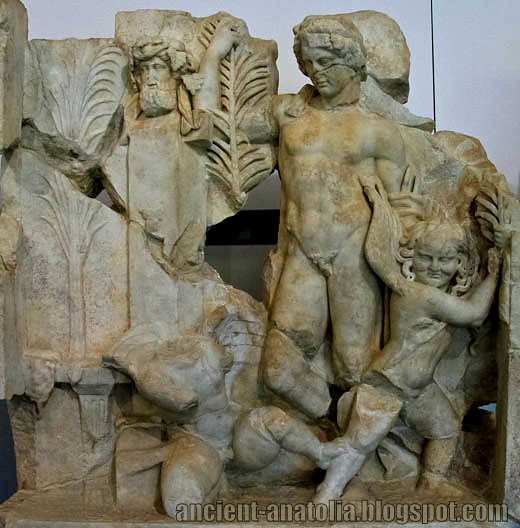
The scene is an allegory of athletic contest, agon. The pillar with bearded head is Hermes, the god of the gymnasium. Nearby is a palm of victory and a prize table with a victory ribbon on it. Two winged baby Eros figures are struggling over a palm branch, now mostly broken; they act out the idea of contest, which is personified in the youthful figure behind. He holds another palm of victory: he is Agon himself! - Museum of Aphrodisias.
Agon, in one sense, meant a contest, competition, especially the Olympic Games, or challenge that was held in connection with religious festivals. In its broader sense of a struggle or contest, agon referred to a contest in athletics, chariot or horse racing, music or literature at a public festival in ancient Greece. Agon was also a mythological personification of the all contests listed.
Relief at Sebasteion: Ancient Aphrodisias School of Sculpture...